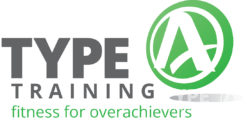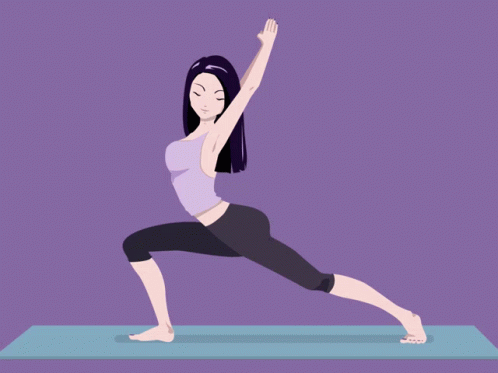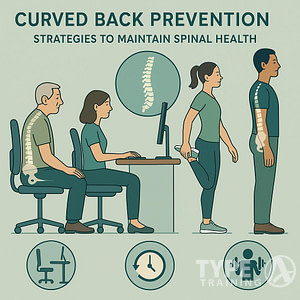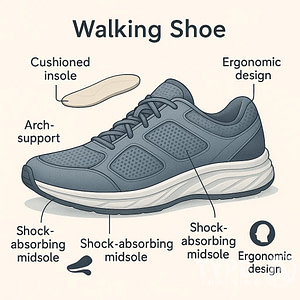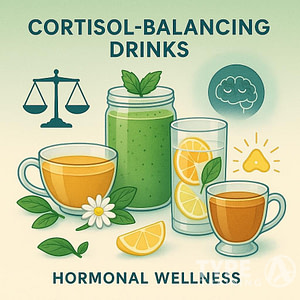Looking to improve your overall health and fitness? You’re in the right place, as we explore popular workouts for women that focus on increasing flexibility, balance, boosting metabolism, and energy levels. Incorporating these elements into your workout routine not only enhances your physical well-being, but also leaves you feeling stronger and more energized throughout the day.
Increasing flexibility and balance are essential components of any fitness program. By working on flexibility, you can maintain a greater range of motion in your joints, which reduces the risk of injury and makes everyday tasks more manageable. Balance, on the other hand, ensures that you’re less likely to experience falls or instability in your daily life. Basic workouts every woman should be doing include yoga, pilates, and bodyweight exercises, as they not only target flexibility and balance but also contribute to overall muscle strength and endurance.
Boosting your metabolism and energy levels are crucial for overall health and weight management. Metabolism refers to the rate at which your body burns calories, and increasing your metabolism means that you can burn more calories throughout the day, even at rest. Engaging in resistance-based workouts, like weightlifting or resistance band exercises, can be highly beneficial in improving metabolism and energy levels. These exercises will aid in building lean muscle mass, which plays a significant role in boosting your basal metabolic rate.
Key Takeaways
- Focus on workouts that promote flexibility, balance, metabolism, and energy levels
- Include yoga, pilates, and resistance training in your routine for a well-rounded approach
- Engaging in regular exercise can lead to overall better health and improved vitality.
Increasing Flexibility and Balance
Popular posts:
Stretching Techniques
Stretching is crucial for improving your flexibility and reducing the risk of injury. Incorporating various stretching exercises into your workout routine can help to maintain and improve your flexibility. There are several types of stretches you can try, such as dynamic stretching and static stretching.
Dynamic stretching includes movements like leg swings and arm circles, which can help to loosen up your muscles and joints before starting your workout. On the other hand, static stretching involves holding a position for 15-30 seconds, allowing your muscles to relax and lengthen. Some examples of static stretches include the hamstring stretch and shoulder stretch. It’s important to hold these stretches for the appropriate amount of time and avoid bouncing, as this can cause injury.
Improving Joint Health
Maintaining joint health is important for overall flexibility and balance. Yoga is an excellent workout that can help improve your joint mobility and flexibility by incorporating various poses and stretches. The slow, controlled movements and postures in yoga focus on alignment, helping to strengthen your core and stabilize your balance. In addition to yoga, incorporating low-impact exercises, such as swimming or cycling, can help to support joint health and relieve pressure on the joints.
Addressing Muscle Imbalances
Muscle imbalances can impact your flexibility and balance, leading to a higher risk of injury. To address muscle imbalances, it’s essential to strengthen weaker muscles while stretching stronger, more dominant muscles. This can be achieved through exercises that target specific muscle groups, such as lunges for the glutes and hamstring curls for the back of your thighs. Make sure to engage in a balanced workout routine, incorporating both strength training and flexibility exercises. By increasing your overall muscle strength and flexibility, you’ll be able to maintain better balance and reduce the risk of injury.
Basic Workouts all Women Should be Doing
When it comes to women’s fitness, focusing on flexibility, balance, metabolism, and energy is crucial. In this section, we’ll discuss some popular workouts that can help women achieve these goals. We’ve divided the section into three sub-sections: Cardio Workouts, Strength Training, and Combination Exercises.
Cardio Workouts
Cardio workouts are essential in any fitness routine as they help strengthen your heart, improve circulation, and burn calories. Some popular cardio workouts for women include:
- Brisk walking: An easy and effective way to get your heart rate up while working your lower body muscles. Many health and fitness experts suggest walking briskly at a pace of 3-4 miles per hour.
- Cycling: This low-impact workout is great for boosting your cardiovascular health, improving leg strength, and burning calories, according to clevelandclinic.org
- Jumping rope: A fun and efficient way to work your entire body, burn calories, and increase your metabolic rate, as mentioned by thetechedvocate.org
Remember to listen to your body and choose the cardio workout that best suits your fitness level and preferences.
Strength Training
Strength training helps build and maintain muscles, increase metabolism, and improve overall fitness. The American College of Sports Medicine recommends women perform strength training exercises at least two to three times a week. Some exercises to try include:
- Push-ups: A simple yet effective upper body exercise that works your chest, shoulders, and arms.
- Squats: A lower body exercise targeting your quadriceps, hamstrings, and glutes.
- Planks: A full-body exercise that helps improve core strength and stability.
Remember to prioritize proper form and gradually increase intensity to avoid injuries.
Combination Exercises
Combining cardio and strength training exercises can maximize your fitness benefits and save time. Some popular combination exercises for women are:
- Circuit training: Following a series of strength and cardio exercises, with minimal rest in between, to keep your heart rate elevated and muscles engaged.
- Yoga: A mind-body workout that focuses on balance, flexibility, and strength, promoting both physical and mental well-being, as reported by the National Center for Complementary and Integrative Health.
Don’t forget to pay attention to your individual fitness goals, and always ensure proper nutrition and hydration to support your workouts and overall health.
Most Popular Workouts for Women
Yoga
Yoga is an ancient practice that helps you connect your mind and body, while also improving your flexibility, balance, and strength. It is known to also help boost metabolism and energy levels, making it an ideal workout for women. There are many different styles of yoga, so you can find one that fits your needs and preferences.
To begin incorporating yoga into your routine, start with basic poses like Downward-Facing Dog, Pigeon Pose, and Warrior II. Gradually increase the difficulty of your practice and consider trying different styles. Remember to breathe consistently throughout your practice and focus on maintaining proper alignment.
Pilates
Pilates is another mind-body workout that emphasizes core strength, flexibility, and balance. It can be done on a mat with bodyweight exercises or using specialized equipment, like a reformer. Pilates has been found to improve posture and body awareness while torching calories and increasing metabolic rate.
A great way to start with Pilates is to learn fundamental mat exercises like the Hundred, Roll-Up, and Teaser. As you progress, consider incorporating equipment and more advanced exercises into your routine. Visit Type A Training’s Pilates Program for further information on the benefits and types of Pilates exercises available.
High-Intensity Interval Training (HIIT)
High-Intensity Interval Training (HIIT) offers an efficient way to burn calories, increase your metabolic rate, and build strength. This type of workout involves alternating short bursts of intense exercise with recovery periods. Since HIIT is typically performed at a high level of intensity, it boosts your metabolism and energy levels quickly.
Some common examples of HIIT exercises include sprinting, jumping jacks, and burpees. Be sure to always warm up before beginning a HIIT workout and adjust the intensity based on your fitness level. For more information on HIIT, including sample workouts.
Barre
Barre workouts combine elements of ballet, Pilates, and yoga to create a low-impact, full-body workout. Barre exercises focus on strengthening and toning the small, accessory muscles, while also improving flexibility and balance. This is an excellent option for women who want a workout that is gentle on the joints without sacrificing results.
To begin a barre workout, you can use light weights, resistance bands, or a ballet barre. Start with exercises like pliés, relevés, and leg lifts. As your strength and flexibility increase, explore more advanced moves and variations. Learn more about barre workouts and their benefits at Barre3.
Spinning
Spinning, or indoor cycling, is a high-energy workout that strengthens your lower body and cardiovascular system. Spinning classes involve cycling on a stationary bike while following an instructor’s cues for speed, resistance, and body positioning. This workout can help burn calories, increase your metabolic rate, and improve endurance.
For those new to spinning, it’s essential to set up your bike properly to avoid injury and maximize your workout. Start by adjusting the seat and handlebars to suit your body and maintain proper form.
Running
Running is a popular workout choice for women because it can be done almost anywhere and requires minimal equipment. In addition to improving cardiovascular health, running helps to burn calories, boost metabolism, and increase energy levels.
Before starting a running program, make sure to invest in a proper pair of running
Boosting Metabolism
Diet and Nutrients
Your diet plays a significant role in boosting metabolism. Consuming sufficient amounts of protein at every meal can help, as the thermic effect of food (TEF) increases metabolism temporarily. High-fiber foods, such as fruits, vegetables, and whole grains, can also help boost your metabolic rate.
Moreover, ensure to distribute your calorie intake proportionally across your meals to maintain a consistent feeding schedule. Incorporating small, healthy snacks between meals can help prevent a dip in your metabolic rate.
Methods to Increase Metabolic Rate
- Stay Hydrated: Drinking enough water is essential for optimizing metabolism as even mild dehydration can slow down this process. Aim for at least eight glasses of water per day.
- Get Adequate Sleep: Poor sleep can negatively impact your basal metabolic rate (BMR) and energy expenditure. Aim for at least 7 hours of sleep per night to keep your metabolism on track.
- Build Muscle Mass: Muscle mass tends to burn more calories than fat, so incorporate strength training exercises into your fitness routine to increase resting metabolic rate (RMR).
- Manage Stress: Chronic stress can increase cortisol levels, which may slow down your metabolism. Engage in stress-reduction techniques, such as meditation or yoga.
High-Intensity Workouts
High-intensity workouts, like interval training, can effectively increase your metabolic rate. These workouts involve alternating between short bursts of intense activity followed by periods of rest or lower-intensity exercise. This pattern keeps your heart rate elevated and helps you burn more calories even after your workout is over.
For example, try incorporating the following high-intensity exercises into your routine:
- Jump Squats: Perform a squat, then jump up explosively and land back into a squat position. Repeat for 30 seconds.
- Burpees: Start in a standing position, then lower into a squat, place your hands on the ground, and kick your feet back into a plank. Jump your feet back into a squat position and stand up, jumping as you do so. Repeat for 30 seconds.
- Mountain Climbers: Begin in a plank position with your arms straight, then alternate bringing your knees toward your chest as fast as possible. Repeat for 30 seconds.
Remember to consult your primary healthcare provider or a fitness professional before starting any new exercise regimen.
Increasing Energy Levels
Physical Activity for Higher Energy
Regular physical activity can improve your energy levels and increase endurance. Engaging in moderate-intensity exercises such as brisk walking, swimming, or cycling for at least 150 minutes per week can play a crucial role in boosting your energy.
Yoga is another excellent option to incorporate into your routine, offering numerous benefits to your energy levels. A simple 30-minute vinyasa routine can help balance your mental state, enhance your mood, and improve sleep quality. Try including the following yoga poses for optimal benefits:
- Plank
- Knees, Chest, and Chin
- Cobra
- Downward-Facing Dog
Importance of Rest and Recovery
Rest and recovery are essential components of any workout routine to avoid feelings of fatigue and exhaustion. Adequate sleep promotes mental clarity, physical healing, and improved mood. Aim for 7-9 hours of sleep each night to ensure your body is well-rested and ready for the day ahead.
Remember to schedule rest days within your workout routine and take breaks when needed. Incorporate activities that promote relaxation and stress reduction, such as meditation, self-hypnosis, tai chi, or even talking to a friend or psychotherapist. These practices allow your muscles to recover and can prevent injury while also increasing your overall energy levels.
In conclusion, combining regular physical activity with proper rest and recovery practices will lead to increased energy levels, improved mood, and better workout performance. Keep these tips in mind as you create and maintain a balanced workout routine tailored to your needs.
Specific Exercises
In this section, we’ll explore various exercises to help improve flexibility, balance, and boost metabolism and energy for women. We’ll divide the exercises into two categories: Full Body Exercises and Isolated Muscle Group Exercises.
Full Body Exercises
Here’s a list of full body exercises that target multiple muscle groups simultaneously. These exercises are great for improving overall strength, flexibility, and balance.
1. Squats: This exercise targets your glutes, quads, and core muscles. Stand with your feet shoulder-width apart and lower your body down into a squat position. Keep your chest up, and push through your heels as you return to the standing position. Repeat for 10-15 reps.
2. Lunges: Lunges work your quads, hamstrings, and glutes. Stand with feet hip-width apart, step forward with one foot and lower your body into a lunge position. Keep your front knee above your ankle and push through the front heel to return to standing. Repeat on the other leg. Do 10-15 reps on each side.
3. Plank: This exercise focuses on your core, shoulders, and chest. Hold your body in a pushup position with your forearms on the ground, making sure your elbows are directly under your shoulders. Hold this position for 30 seconds to 1 minute, keeping your body in a straight line.
4. Burpees: Engage your entire body with this high-energy exercise. From a standing position, squat down, place your hands on the floor, and jump your feet back to a plank position. Perform a pushup, then jump your feet back to your hands, and explosively jump up, reaching your hands overhead. Do 10-15 reps.
5. Reverse lunges: Similar to the lunge, this exercise works your glutes, quads, and hamstrings. Begin in a standing position, step one foot back while lowering your body into a lunge position. Make sure the front knee stays above your ankle. Push through the front heel to return to standing. Repeat on the other side. Do 10-15 reps on each side.
Isolated Muscle Group Exercises
For targeted strength training, these exercises isolate specific muscle groups.
1. Dumbbell Chest Press: This exercise works your chest and triceps. Lie on a bench with a dumbbell in each hand. Bring the dumbbells down to your chest, bending your elbows to 90 degrees. Press the weights back up, extending your arms fully. Repeat for 10-15 reps.
2. Seated Shoulder Press: Target your shoulders with this exercise. Sit on a bench with your back supported and a dumbbell in each hand. Begin with the weights at shoulder height and press upward until your arms are fully extended overhead. Lower back down to shoulder height and repeat for 10-15 reps.
3. Hamstring Curls: Strengthen your hamstrings by lying face down on a flat bench. Hold a dumbbell between your feet, curl your legs toward your glutes, and then slowly lower the weight. Repeat for 10-15 reps.
Remember to warm up before starting any exercise routine and stretch after to prevent injury and increase flexibility. For more guidance and resources, consider consulting a certified personal trainer to help create a personalized workout plan tailored to your specific goals and needs. Stay consistent, and you’ll start seeing improvements in your flexibility, balance, metabolism, and energy levels.
Additional Factors to Consider
When creating a workout plan focused on increasing flexibility, balance, and boosting metabolism and energy, there are several factors you should also consider. These factors include age and hormonal influence, as well as body size and genetics.
Age and Hormonal Influence
As you age, your body undergoes various changes that can affect your workout routine. Hormonal fluctuations can play a significant role in your ability to lose weight and gain muscle. For example, during menopause, many women experience a decline in estrogen levels, which can lead to weight gain and a slower metabolism. Incorporating strength training or resistance exercises in your workout plan can help counteract these effects and keep your bones strong as you age.
In addition, it’s essential to modify your exercises as you get older, focusing on low-impact activities like walking and swimming instead of high-impact exercises that can put strain on your joints. Listening to your body and adapting your workout routine according to your personal needs is crucial for maintaining your overall health and fitness.
Body Size and Genetics
Your body size and genetic makeup can also influence your fitness goals and workout routine. Everyone’s body is different, and what works for one person might not work for you. While it’s crucial to incorporate a variety of exercises such as resistance training, weight lifting, and flexibility training into your workout plan, you should also tailor your routine to suit your unique body and genetic predispositions.
Some people are naturally more flexible or have a higher metabolism, which can affect how quickly they see results from their workouts. On the other hand, some individuals may have a tendency to gain weight more easily due to their genetic makeup or even specific health conditions, such as thyroid issues. Keep these factors in mind while developing your workout routine, and remember to be patient with yourself and your progress.
Ultimately, a workout plan centered on flexibility, balance, and boosting metabolism and energy should be tailored to your individual needs and preferences. Consider your age, hormonal influences, body size, and genetics when developing your routine to ensure that you get the most benefits from your efforts.
Frequently Asked Questions
What are the most effective workouts for increasing flexibility in women?
To increase flexibility in women, engaging in a variety of stretching exercises is essential. A good workout should focus on stretching all major muscle groups used in daily life. One effective approach is the seated side-to-side stretch. When performing flexibility exercises, aim to devote about 10 minutes per day to stretching.
What types of exercises are best for improving balance for women?
Improving balance for women requires exercises that challenge stability and coordination skills. One example is tandem standing, where you stand up straight with your feet hip-width apart, then place one foot in front of the other, heel to toe. Hold this position for 5 to 30 seconds, and repeat on the other side.
How can a woman boost her metabolism through exercise?
Boosting your metabolism can be achieved by engaging in regular physical activity, particularly strength training. Strength training helps build lean muscle mass, which increases metabolic rate. Ensure your workouts include compound exercises, like squats, deadlifts, and push-ups, that target multiple muscle groups simultaneously.
Which workouts are ideal for enhancing energy levels in women?
Workouts that enhance energy levels in women should involve a mix of cardio and strength training, combining the benefits of both. Engaging in moderate-intensity aerobic exercises, like brisk walking or swimming, can help increase energy levels and combat fatigue.
What is the most suitable HIIT workout for women?
A suitable HIIT (High-Intensity Interval Training) workout for women may include a combination of cardio and strength exercises. One example is alternating between 30 seconds of high-intensity work (like jump squats or burpees) followed by 30 seconds of rest, repeating this cycle for a total workout time of 10 to 20 minutes. HIIT workouts are customizable and can be adapted based on individual fitness levels.
How can cardio and strength training be combined for optimal female weight loss?
For optimal weight loss, women should combine both cardio and strength training to maximize calorie burning and muscle building. Aim to incorporate at least 150 minutes of moderate-intensity or 75 minutes of vigorous-intensity aerobic activity per week, like brisk walking, jogging, or cycling. Additionally, perform strength training exercises, like push-ups, squats, and lunges, targeting all major muscle groups two or more days per week.
